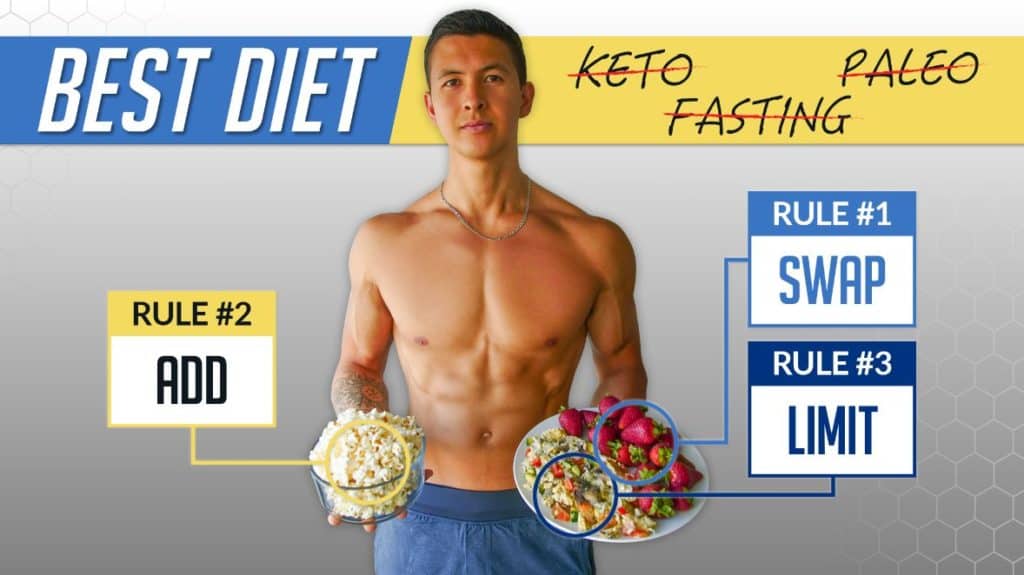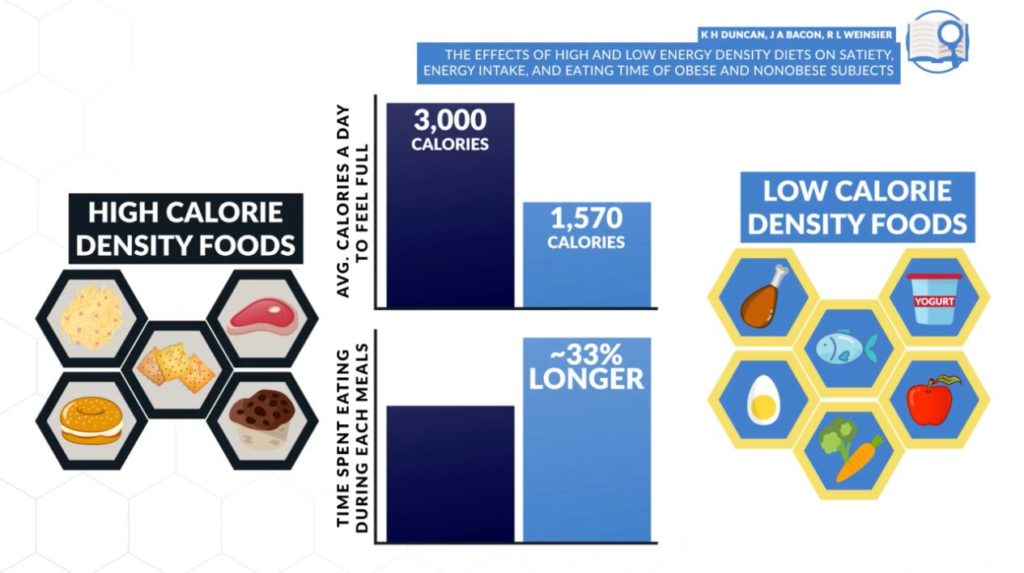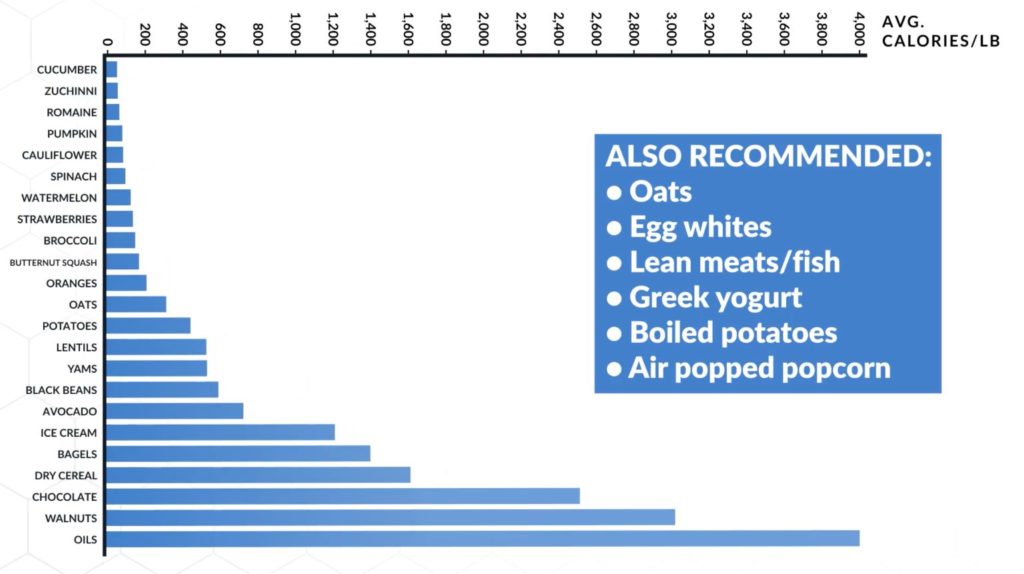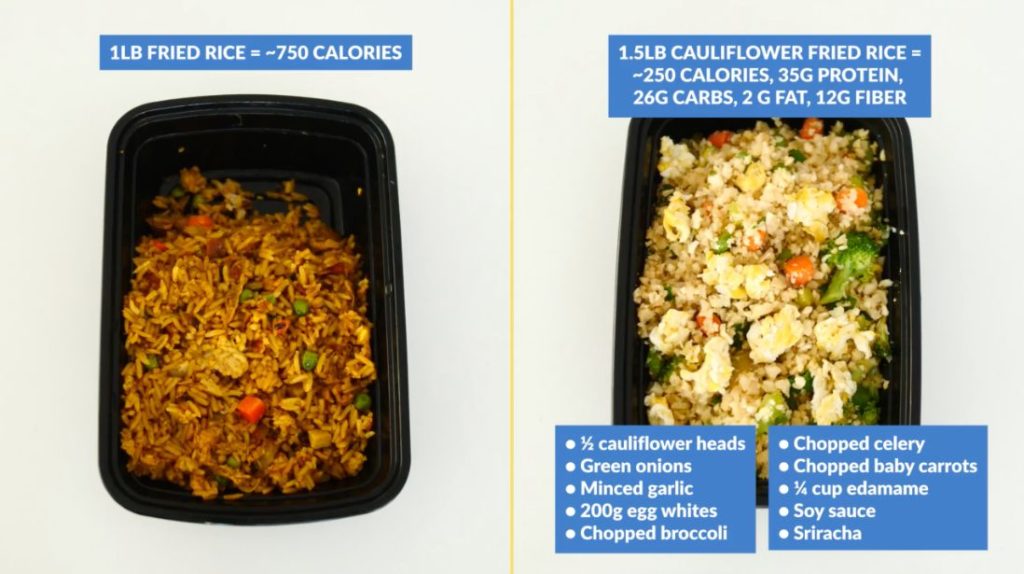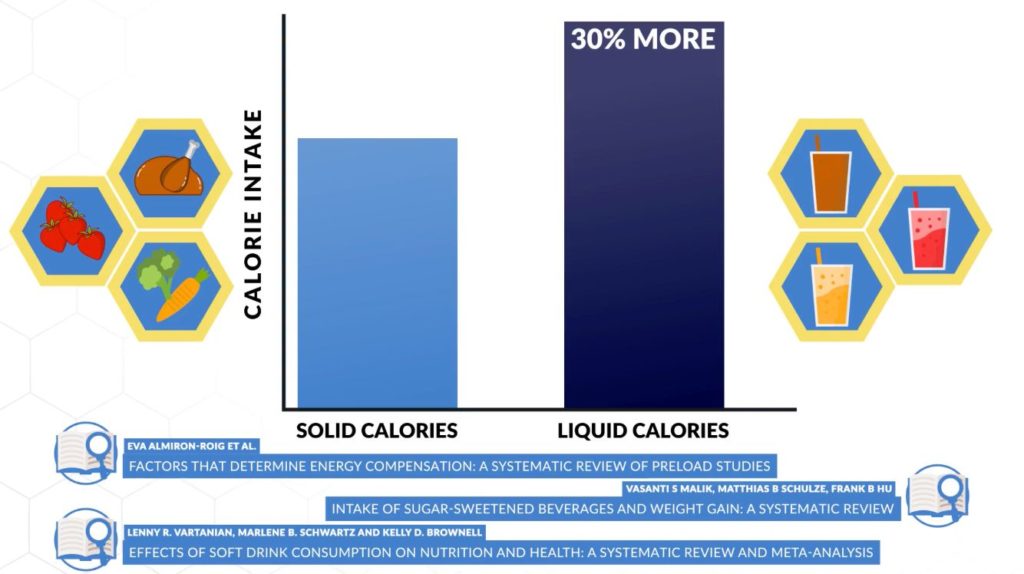The Single Best Diet To Lose Fat (3 RULES)
There are so many different diets out there. How do you know which is the single best diet to lose fat? Find out in this article.
How many times have you heard that a certain “diet” is the new magical way to strip off fat? That it's the single best diet to lose fat?
I don't know about you, but I see headlines, videos, and posts that promote a novel diet as the best way to lose fat all the time. And it frustrates me because of all the confusion and misinformation it causes.
I mean, let’s just take a quick look at a few diets out there.
There’s keto. There’s intermittent fasting. Then, there’s OMAD. And now, there’s even something called the carnivore diet! As you probably already know, all these diets have their own set of rules.
Admittedly, these diets do have various physiological benefits associated with them. But here's the truth. When you look strictly at body composition and more specifically fat loss – not just weight loss - research has time and time again shown that when calories and protein intake are equated, there’s nothing special about any of these diets.
But now you’re probably wondering... Jeremy, if that’s the case, then why exactly did these diets get popularized in the first place? And why does it seem like so many people do seem to see success with these diets?
And as I’ve said in the past, your nutrition will hands down be the most important factor when it comes to transforming your body. I used to be completely lost as to how to approach my nutrition and I know a lot of you out there are as well. This is exactly why within my Built With Science programs, I not only cover training but also stress the importance of nutrition. In fact, I even developed a custom-built nutrition software designed to optimize your diet based on your own stats and goal. For more information:
Click the button below to take my analysis quiz to discover the best program for you:
↓
Fad Diets Just Make Sticking To A Calorie Deficit Easier
To answer this question, we have to look at the very problem with dieting. Which is also why most people fail with their diets: hunger. Many people fail with their diets simply because they struggle to consistently eat less. And, thus, stay at a calorie deficit due to their hunger levels.
Fad Diets Reduce Hunger Levels
And that’s where each of these diets can come in handy.
Keto, for example, makes it easier for you to stay at a calorie deficit by simply eliminating a whole food group, carbs. Imagine what happens when you’re not allowed to eat any carbs. Most of the processed junk you’d usually have is cut out of your diet. And you have to instead rely on protein sources and healthy fats, which if you eat quite a bit of, is going to keep you pretty full throughout the day. And hence, make it easier for you to eat less and stay in a calorie deficit.
Now let’s look at intermittent fasting. This is where you restrict yourself to a feeding window typically of about 8 hours a day. Again, all this does is it keeps your hunger at bay. If you can only eat within 8 hours a day, then you’re going to be able to control your hunger much better within those 8 hours. Why? Well, because you’ll have more food to eat in a shorter amount of time.
And that’s all that these “magical” diets do. They simply make it easier for you to adhere to a calorie deficit.
But Fad Diets Are Unsustainable For Most Individuals
These diets do work well for some individuals who are able to adhere to them in the long run. But this isn’t the case for most individuals! That's because the majority of people will instead hop on these diets thinking they do something magical, see some results, yet struggle to stick with it. Because of this, they're unable to sustain their results in the long term. And it's all because of how unsustainable these diets are in the first place.
Instead, it’s MUCH simpler than this. Screw the next fad diet, just listen to this.
Think of your diet as a bank account. When you’re in a calorie deficit, you only have a limited amount of calories to spend every day. So you want to invest your calories into foods that are going to bring you the best bang for your buck. Foods that can keep you full and satisfied with fewer calories. As that’s what will be key in enabling you to stick to that calorie deficit with ease.
It really is that simple.
The Best Diet To Lose Fat Only Has 3 Rules
Now, as for the best diet to accomplish this and lose fat, here are 3 “rules” that you can stick to everyday that’ll enable you to get the most out of your limited amount of calories.
Rule 1: Opt For Low-Calorie Density Foods
The first rule for the best diet to lose fat is to opt for low-calorie density foods.
And the reasoning behind this is simple. Several studies have indicated that feeling full is more likely to make a person stop eating than is the total calorie content of the food consumed.
Low-Calorie Density Foods Provide Favorable Dieting Effects
So by simply opting for foods that have a low-calorie amount relative to their weight, you’ll be able to eat more of that food for a given calorie intake. This then causes a few favorable effects.
Activates The Gut's Stretch Receptors
One, is that you’ll be consuming a higher volume of food for fewer calories. This is important. Increased food volume activates the stretch receptors in your gut to enhance the fullness response. This alone is so beneficial when dieting. Research indicates that we tend to eat to maintain a constant volume of food intake.
Why? Because your stomach actually gets used to the amount of stretch you provide it with your diet. So, if you all of a sudden cutout food when you’re on a diet, your stomach gets stretched out less from your meals. And you experience more hunger as a result.
Leads To Longer Chewing And Meal Times
Second, a higher food volume also means more chewing is required and longer meal times. These both also enhance the fullness effect. And finally, low calorie density foods are often also quite high in fibre (e.g. fruits and veggies), which also seems to have an added effect on fullness because it slows digestion. Thus, all providing the perfect formula for you to stay full on less calories.
In fact, one study tested this effect by having 20 subjects eat as much as they wanted over a period of 5 days from a diet consisting of high calorie density foods. Then, they swapped this for low calorie density foods and repeated the process. The results? On the low-calorie density diet, the participants felt full with just over half the calories (1570 kcal) they needed to feel full on the high-calorie density diet (3000 kcal). And eating time on the low-calorie density diet was also significantly longer by an average of about 33% per day.
And in the long term, this seems to lead to significantly greater weight loss as a result. With studies lasting longer than 6 months showing that weight loss was 3 times greater in individuals who ate a diet composed of low-calorie density foods as opposed to high-calorie density foods.
Best Low-Calorie Density Foods To Include In Your Diet To Lose Fat
Now, as for the best low-calorie density foods, these are typically foods that are high in water and fiber. That's because these both decrease calorie density. For this reason, and as shown in this brief list, most fruits and vegetables are the lowest in calorie density. Fruits and vegetables are high in both water and fiber content.
Whereas more processed and fattier foods don’t rank as well. Oats, egg whites, lean meats and fish, greek yogurt, boiled potatoes, and air-popped popcorn are some other great options as well. So, make it a point to incorporate more of these 'weightloss-friendly' foods into your diet.
And doing so really is quite simple.
How To Incorporate Low-Calorie Density Foods In Your Diet
For example, adding more veggies into your dishes and replacing some of your carbs or fats with the above-listed foods is an easy way to bump up the volume and fullness you experience from that dish. While, at the same time, reducing the calorie content of that meal.
And get creative with it!
For example, I could a 1lb bowl of fried rice which packs around 750 calories. Or, I could have cauliflower fried rice instead. Which ends up being even more weight and volume (1.5 lbs) yet would pack only 1/3rd of the calories (250 calories). All while still tasting great and delivering way more protein and fiber as well!
Here are some other easy swaps you can make as well. You can apply this same concept to pretty much any dish or dessert out there if you just get creative and do some research.
And in addition to this, when you’re out grocery shopping, pay attention to the nutrition labels! I mean let’s say you want to make some wraps. I found these tortillas which pack 240 calories for 3 tortillas. Whereas these coconut flour tortillas pack only 130 calories for 3 tortillas.
Yet, are the same size and even pack 11g more fiber, which will no doubt keep me just as full or even more full than the other ones while saving me quite a bit of calories! So be mindful of this. It’s really the little switches like this that really do make all the difference.
Need more guidance with your diet? Don't worry. Our 3-on-1 coaching program can help. You will not only have a dietitian to customize your nutrition plan, but also a coach to focus on your training plans - plus, there's me to answer your questions every month! You'll achieve your dream physique in record-breaking time. Sounds good? Let's get started then:
Click the button below to find out more about the 3-on-1 coaching program:
↓
Rule 2: Moderate Your Healthy Fats
Next, is you want to keep an eye on your fat intake. Now, we do want to intake a good amount of healthy fats in our diet. Still, studies have found that fats have the lowest impact on fullness when compared to carbs and protein. That's because high-fat foods are often smaller in weight and volume.
Yet, pack over twice the number of calories per gram as carbs or protein does. This just makes them very easy to unknowingly eat especially given that most people underestimate the calories of these “healthy” foods.
I mean, let’s do some 100 calorie comparisons to illustrate this:
- 5 walnuts are the calorie equivalent of about 25 strawberries
- 1 tablespoon of coconut oil equates to about 5 cups of air-popped popcorn
- 1/4th of an avocado equates to about 30 baby carrots
The latter of each would quite obviously provide a much greater effect on fullness.
So, my recommendation is to aim to experiment with a relatively lower fat intake that’s at least meeting the minimum recommended fat intake every day ( 0.25-0.5g/lb of body weight ). And then allocate the rest of your calories more towards carbs and protein. That's because those tend to have a much greater effect on your fullness.
Do experiment with this, though. The best diet comes down to personal preferences. Some of you will just enjoy having more fats in your diet. That's perfectly fine. But just make sure that for the fats you do intake every day, be mindful of them and measure them whenever possible. Remember that calorie-dense foods can very quickly take you out of a calorie deficit, which is what matters the most.
Rule 3: Limit Your Liquid Calories
Lastly, is you’ll want to limit liquid calories. Liquid calories have consistently been found to be less satiating than solid calories.
In fact, even in studies where the liquid calorie meal stretches the stomach out more than the solid meal does, the liquid meal still elicits a weaker fullness response than solid foods.
In addition, solid foods tend to delay the return of hunger for longer than liquid foods do.
Meaning that during a dieting phase it would be a good idea from a hunger management perspective to limit your intake of liquid calories. This means avoiding fruit juices, smoothies, and shakes. And, instead, opting for their whole food counterparts which will have a greater impact on your fullness.
Don’t get me wrong, though. a post-workout shake is perfectly fine. But if you’re having additional protein shakes and/or protein smoothies throughout the day, then that’s where this can become problematic in terms of managing your hunger.
Best Diet To Lose Fat Takeaways
So, to sum this all up for you, here are the key takeaways that you’ll want to implement into your diet.
- Swap higher calorie density foods for low-calorie density foods. These deliver a higher amount of volume & fiber for a fewer amount of calories. This will enable you to stay full and satisfied with less calories.
- Be mindful of your fat intake. Try keeping it relatively low/moderate. Using these calories for carbs/protein instead can help with fullness.
- Limit liquid calories (smoothies, shakes, juices, etc.) when dieting. Solid foods generally provide a greater effect on fullness and blunt hunger for longer.
Get Your Fat Loss Meal Plan PDF Download
And for your convenience, I’ve created a free fat loss meal plan for you that covers a full day’s worth of meals with these tips applied to them. I’m sure that many of you will find dieting to be so much easier and so much more enjoyable with this plan compared to the meals you’re currently using.
To grab a copy of this:
Click the button below to download the full fat loss meal plan PDF:
↓
All in all though guys it’s vital that you set up your nutrition plan in a way that not only maximizes fat loss but more importantly in a way that you will actually adhere to and enjoy sticking to every day. As that’s the key to long term success. Regardless of the dieting approach you choose to follow.
And for a step-by-step program that does exactly that and not only shows you what and how much to eat week after week but also pairs this with a weekly workout plan so that you can burn off fat as efficiently as possible with science, just like countless of our members have done with their Built With Science programs, then:
Click the button below to take my analysis quiz to discover the best program for you:
↓
I hope you enjoyed this article! Don’t forget to give me a follow and connect with me on Instagram, Facebook, and Youtube as well, in order to stay up to date with my content.






